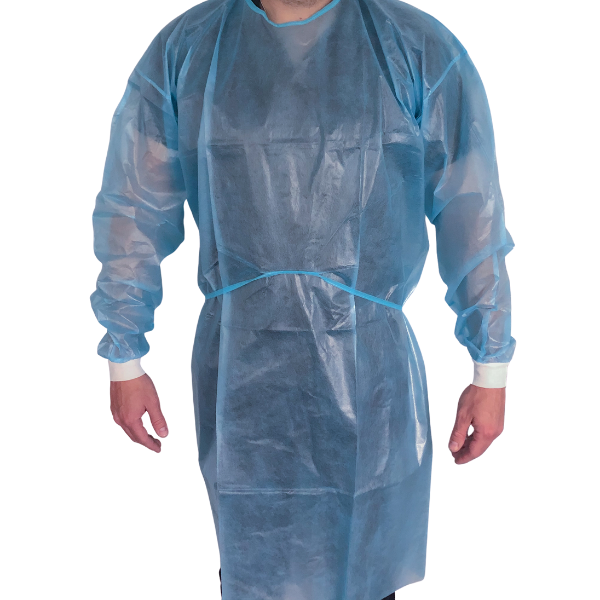Disposable Isolation Gown Specifications
I’m sure most of us, by now, know about personal protective equipment (or PPE), such as face masks and gloves.
But what about isolation gowns? When and why are they used and what are the specifications?

They’re a thin gown that covers clothing and protects the wearer and the people in contact with them. They’re typically worn by medical staff in a hospital, such as nurses and doctors during a surgery and around contagious patients. Or people that work in a lab with dangerous chemicals and viruses. Janitors would also need a gown to protect them from harmful chemicals that they’d use for cleaning.
How do they protect the wearer and the people in contact with them? Isolation gowns create a physical barrier between the wearer and whatever they’re protecting themselves (and others from) and trap microorganisms and bodily fluids to prevent transfer.
They can be disposable, which is going to be the main focus of this article, as far as specifications go, or reusable.
In low risk situations, such as regular surgeries or non-contagious patients, working around safer lab chemicals and other low risk lab duties, reusable, washable gowns or coats are typically worn.
In moderate to higher risk situations, such as a contagious patient or patients, dangerous viruses and chemicals, a disposable isolation gown would be used. Of course, in very high risk situations, a hazmat suit would be worn…
So, now that you know what they are and why they’re used, what are the guidelines or specifications for disposable isolation gowns to keep the wearer and the people that come into contact with them safe?
The recommendations for medical disposable isolation gowns are that they have knitted cuffs, velcro enclosure at the neck and, most importantly, be made of 3 layers of fluid-resistant SMS fabric. SMS means Spunbond-Meltblown-Spunbond. An example of this type of material would be Polypropylene
(Sources: fishersci.ca and femedicalclothing.com)